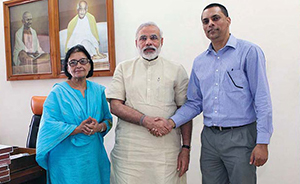How to bridge India’s tech-induced skill gap
The world stands on the brink of the Fourth Industrial Revolution, powered by a wide range of new technology breakthroughs ...
Further, in the services sector, particularly in the IT sector, e-commerce, banking and financial services and health care services, there is a huge potential for automation technologies, which would increase the demand for skilled workers and reduce the demand for middle-skilled workers.
However, in India, over 80 percent of the working population is engaged in low-skilled jobs in the unorganised sector. These workers aspire to join the middle-skilled workforce in the organised sector to raise themselves from poverty. However, the changing nature of work due to technology advancements in the organised sector prevents their upward mobility and any improvement in their incomes.
Addressing the challenges induced by technological advancements requires reforms in India's higher education system. The institutes of higher learning should redesign the course curriculum by understanding the key market transitions amidst the technological advancements. This would enable the country to create a workforce which could be placed in the positions demanded by the companies in the digital era and thus bridge the skill gap in the labour market.
However, looking at the current state of higher education in India, one can perceive that it is not just the quality of the system which needs to be improved, there is also much to be done in terms of the number of students enrolled in institutes of higher learning and heterogeneity existing in access to higher education based on socio-economic status, gender and also region. The Gross Enrollment Ratio (GER) in tertiary education in India is 26.9 per cent, which is lower than that of China (48.4 per cent), Indonesia (27.9 per cent) and the Philippines (35.3 per cent), among others.











Comments.